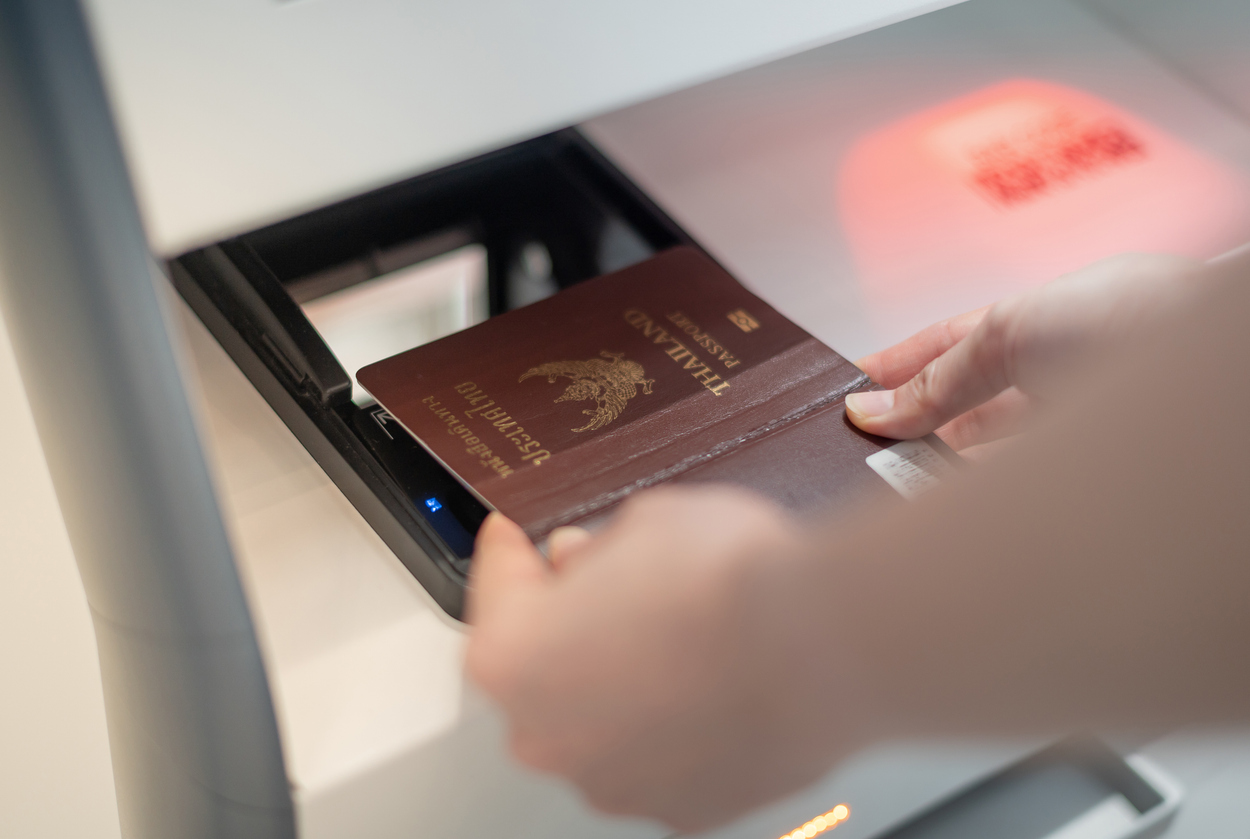Check any official border control site—like US Customs and Border Protection—and you’ll find a clear rule: travelers under the Visa Waiver Program must present a machine-readable passport. While alternatives exist, these documents have become the near-universal travel standard.
In 2025, as digital ID systems expand worldwide, the machine-readable passport feels almost vintage—but its journey from introduction to global adoption explains why it’s still vital today.
What Is a Machine-Readable Passport?
A machine-readable passport (MRP) is a standardized travel document defined by the International Civil Aviation Organization (ICAO) in Doc 9303. It’s designed so both people and automated systems can quickly confirm the traveler’s identity.
Core features of an MRP under ICAO standards:
- TD3-size booklet — 125 × 88 mm with at least eight pages, including a data page.
- Data page layout — Personal details must be inside a defined rectangle for consistent human and machine reading.
- Seven mandatory zones — Including the Visual Inspection Zone (VIZ) with the holder’s photo, personal data, and the machine-readable zone (MRZ) for automated scanning.
- Embedded portrait — Securely integrated into the biodata page (no glued or affixed photos allowed).
- Latin alphabet and Arabic numerals — With transliteration for other scripts; optional fields may appear in national languages plus English, French, or Spanish.
- Validity period — Usually up to five years for minors, up to ten years for adults.
- Machine-readable zone of passport — Encodes key details from the VIZ, such as name, date of birth, and nationality, with check digits to prevent errors and fraud.
Coming in 2026: ICAO will require more specific document codes in MRZ and VIZ, such as:
- “PP” for ordinary passports
- “PE” for emergency passports
- Other two-letter codes for special types
These changes will boost automated verification accuracy and global interoperability.
Why MRPs Were Introduced
Before MRPs, passports varied wildly—different sizes, layouts, languages, and security elements—slowing border checks and making counterfeiting easier.
ICAO began developing machine-readable travel documents in 1968. The first Doc 9303 was released in 1980, with Australia, Canada, and the US as early adopters. By April 2010, ICAO required all member states to issue MRPs. Non-machine-readable passports remained valid until late 2015 in most places, though some countries extended their use.
After 9/11, global security concerns accelerated the adoption of new features like biometric chips, setting the stage for the next passport generation.
What Is a Biometric Passport?
A biometric passport—officially an electronic machine-readable travel document (eMRTD)—is an MRP with an embedded contactless RFID chip. This chip stores:
- Personal data from the VIZ
- At least one biometric identifier (usually a digital facial image, sometimes fingerprints or iris scans)
- A digital signature to ensure data integrity
Biometric passports carry the “chip inside” symbol on the cover and often on the data page. Data is protected by encryption and verified through Public Key Infrastructure (PKI):
- Each country has a Country Signing Certification Authority (CSCA).
- CSCAs issue Document Signer Certificates (DSCs).
- DSCs sign a Security Object (SOD) stored on the chip.
- Other countries verify the signature to confirm authenticity.
Access protection:
Older passports use Basic Access Control (BAC), while modern ones rely on Password Authenticated Connection Establishment (PACE), which offers stronger security during NFC reading.
Key Differences: MRP vs. Biometric Passport
| Feature | Machine-Readable Passport (MRP) | Biometric Passport (eMRTD) |
| Data format | Printed personal data + MRZ | Printed data + MRZ + chip data |
| Chip | No | Yes, with VIZ data & biometrics |
| Biometrics | None | Facial image (mandatory), possibly fingerprints/iris |
| Security | MRZ check digits + physical features | All MRP security + PKI authentication |
| Verification | OCR of MRZ + VIZ comparison | OCR + chip reading + biometric match |
| Speed | Fast | Slightly slower but more secure |
Bottom line:
All biometric passports are machine-readable, but not all MRPs are biometric. Biometric passports add a strong link between the document and the traveler through biometric matching.
Challenges in MRP Verification
Even with standardization, MRPs present some hurdles:
- VIZ variations — Fonts, layouts, and optional fields differ between countries, complicating OCR.
- Truncated MRZ names — Long names may be shortened, requiring intelligent matching.
- Security feature inconsistencies — Different interpretations of ICAO guidelines affect hologram types, ghost images, and signature placement.
Verification tools, such as Regula’s database of 15,000+ document templates from 252 countries, help overcome these inconsistencies.
Are MRPs Becoming Obsolete?
While biometric passports are now the preferred standard, the transition isn’t complete. For example, India only began issuing biometric passports in late 2024.
What’s next: ICAO’s Digital Travel Credential (DTC) aims to merge a physical passport with a secure mobile-stored digital version. However, technical, interoperability, and infrastructure challenges mean adoption will be slow.
MRPs will likely remain in circulation for at least another decade.
Conclusion
The machine-readable passport revolutionized border control with a standardized, scannable format that improved speed and security. The biometric passport enhanced this with encrypted chip data and biometrics, adding a new layer of trust.
For now, both coexist, with biometric passports gradually replacing MRPs. But full digital transformation will take time—meaning MRPs will stay relevant in global travel for years to come.














